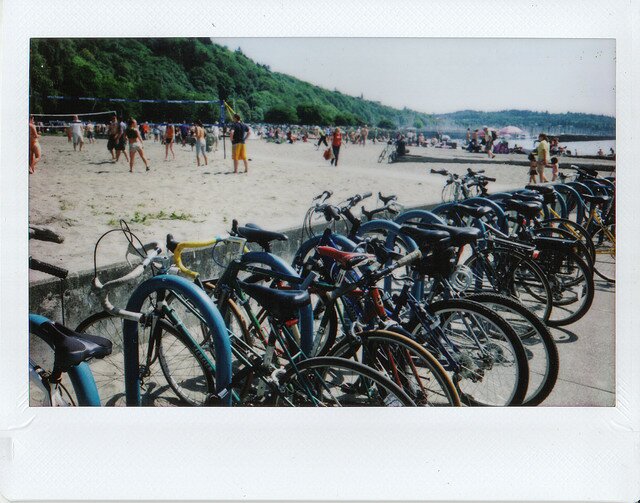
Sightline’s post on the demographics of bicycling, “Who Bikes?” contains a response of sorts to that viral Vanity Fair article, “Of the 1%, by the 1%, for the 1%,” by Joseph Stiglitz.
Stiglitz excoriates the pernicious effects of income inequality, concluding:
The top 1 percent have the best houses, the best educations, the best doctors, and the best lifestyles, but there is one thing that money doesn’t seem to have bought: an understanding that their fate is bound up with how the other 99 percent live. Throughout history, this is something that the top 1 percent eventually do learn. Too late.
But when it comes to bicycling, the appeal extends through all income classes. And there’s nothing like nearly getting run over by an SUV to illustrate how your fate is bound up with how others live. (I know it’s irrational, but if I’m going to be hit, I prefer it be a Subaru.)
Now, certainly, biking is a more popular choice for anyone on a budget. Sightline’s Eric de Place says, “the biggest share of bicyclists isn’t yuppies, it’s low income people. In fact, the lowest-earning quarter of Americans make nearly one-third of all bike trips.”
But he emphasizes that bicycling is “remarkably evenly distributed” among the other three quarters. Said another way, the poorer half of the U.S. makes 52 percent of all bike trips, while the richer half make 48 percent.
The extent of this commonality of interests is likely to be overlooked if you’re not careful: in Seattle, just 2.5 percent of commuters go by bike, though that still places us mid-pack in the list of the top ten largest U.S. cities.
But there’s a lot of distance between commuting and riding solely recreationally. Seattle’s Cascade Bicycle Club has over 13,000 members, and their annual Seattle-to-Portland ride has sold out months early, with 10,000 participants. In a city like Seattle, where “practically everyone” has a bike hanging in a garage, I’d be more interested in knowing how often people hit the road with a bicycle for any reason, not just commuting. (Nationally, commuting made up just 11 percent of bike trips in 2009.)
Now more than ever, as Stiglitz argues, we could stand to build bridges that are not purely rhetorical. Seattle City Council’s Sally Bagshaw has returned from a trip to Portland with visions of bike boulevards. Typically, the response to something like this is as if bicyclists had literally stolen a street and made off with it, though people living on bike boulevards come to appreciate having a safe, quiet street that cars move slowly along.
But again, consider what the real population of cyclists might be, especially in the context of a residential street: kids biking to and from school or other activities, people visiting friends down the street, people just out for exercise, or running an errand near home. Cycling infrastructure is often seen as serving a minority, a niche group. But bike boulevards in Seattle could be serving a cycling population that rivals that of drivers–thanks to the obsession with measuring bike commuting, it’s actually hard to tell. What we do know is that bike infrastructure serves all income classes wonderfully equally.